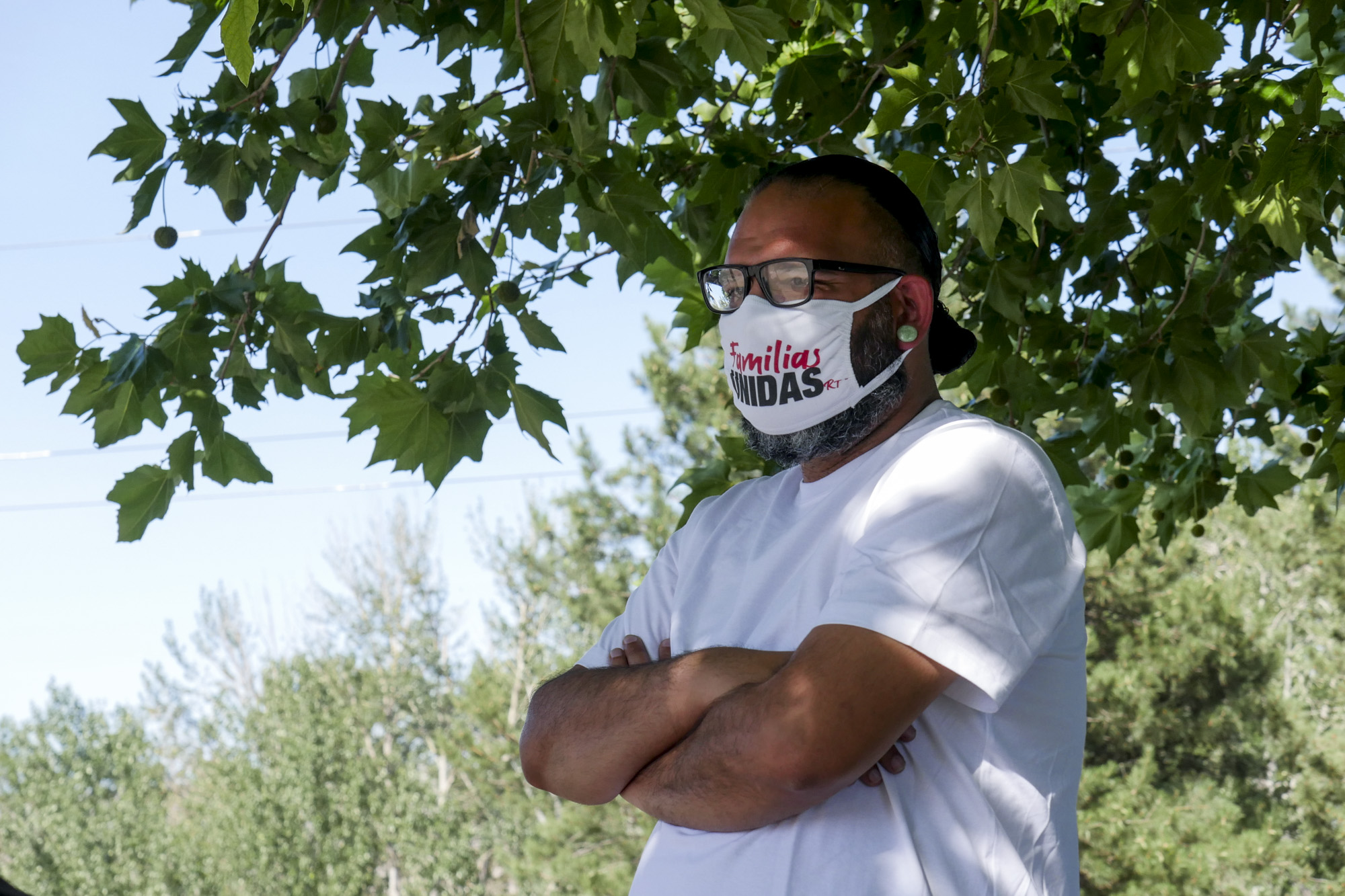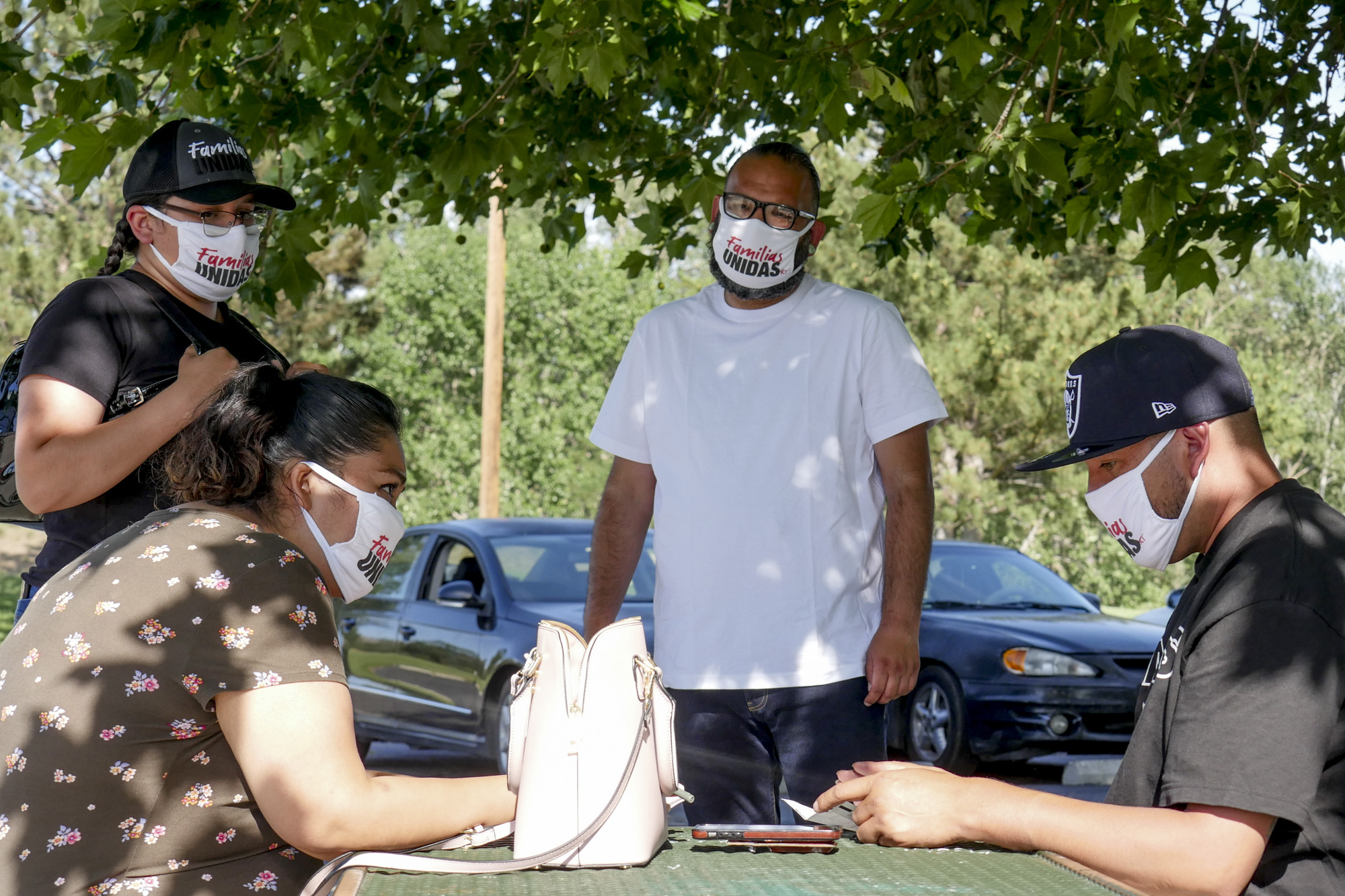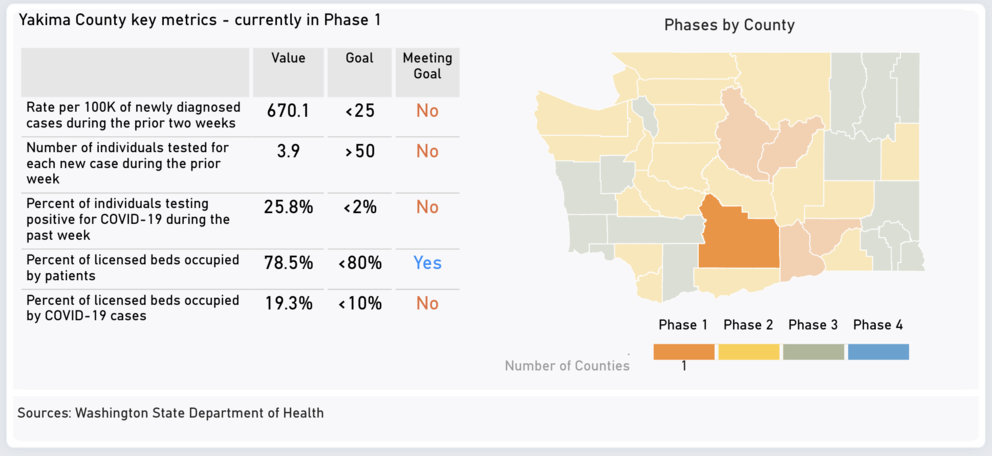Rosalinda Guillén was one of the community leaders who sounded the alarm about farmworker safety in March. She’s the executive director of Community to Community Development, an organization based in Bellingham that focuses on democracy and food justice, as well as providing support to agricultural workers.
“No healthcare, poor housing, exhaustion, crowded into packing sheds, crowded into buses. They have been vulnerable for generations. And nothing was done to change that environment during this pandemic,” Guillén said. “It’s almost like we’re someone's sacrificial lamb in this pandemic. And again, every time something happens, our community has to suffer for it.”
Yakima County also has the highest number of deaths per capita in the state, and while the Yakima Health District said it is testing about 500 people a day as of June 24 — the highest per capita testing rate in Washington — that testing rate isn’t anywhere near enough to keep up with requirements to move to Phase 2 of the state's reopening plan.
The county is 50% Latinx — 46% in the city of Yakima — and they are being hit hard by COVID-19. In the county, they make up 49.8% of positive COVID-19 cases. Elsewhere in the state, they’re much more disproportionately affected: 44% of the people in Washington who have tested positive for COVID-19 are Hispanic, while they make up only 13% of the state’s population.
In Yakima County, agriculture provides 27.8% of all jobs, and many of those workers are Latinx. One of those farmworkers, José, is a forklift driver at Zirkle Fruit Company in Selah, a small town just north of Yakima. José, who is originally from Mexico, first started to feel sick on a Friday in mid-May, more than two months after the first coronavirus cases were reported in the state. The 29-year-old, who prefers to keep his last name anonymous for privacy, starts his shifts at 4:15 a.m., and on that day he went home for his 9:30 a.m. lunch break. He thought nothing of his upset stomach, so he returned to work in the afternoon.
How is COVID-19 affecting Washington's ethnic minorities? Testing, exposure and more
But the next day, on his day off, his lower back was in so much pain he couldn’t stand up straight. By 8 p.m., he had a high fever.
By Sunday morning, his throat was closing. While he could breathe well, he couldn’t talk. Then, he started to develop a dry cough and lost his sense of smell and taste. His wife made him an appointment to get tested for COVID-19 on Tuesday at their medical clinic. The clinical staff told him not to return to work, so José stayed at home until he received a call with the test results the following Monday. After a few follow-up questions, his fears were confirmed: He had tested positive for COVID-19.
During March, April, and May, José’s employer wasn’t requiring masks, and it said that if you did wear one, you had to buy your own. The Wednesday before José got sick, a co-worker had gone home with a high fever. José thinks that’s when he contracted COVID-19, because his family had been very careful at home: They wore masks when they went out, and his wife, who works in the health industry, would bring along a bag of gloves and a homemade spray bottle of hand sanitizer.
Community to Community Development’s Guillén heard from a lot of farmworkers that early on in the pandemic, in February and March, there were no masks, no social distancing and no sanitation. Advocates knew it was going to grow into a much larger problem, she said. She talked with state officials, including Inslee, but felt she wasn’t heard.
“How can you not talk about agriculture when you talk about the growing numbers of COVID infections in Yakima?” Guillén asked. “It blows my mind. It’s so disrespectful. It’s so racist. It's so familiar to what we've had to deal with for generations in Washington state. It's heartbreaking because people are dying and will die.”
When Inslee visited Yakima on June 16 to address the “rampage” of COVID-19 in the county, he acknowledged agriculture, but only in a response to a journalist’s question.
“To my sort of assessment at the moment, [state Department of Labor & Industries farmworker regulation] appears to be functioning relatively well,” Inslee said. “We do not pretend to think we’ve eliminated the risk of COVID in that or any other industry, but I think the things we’ve done with hygiene and spacing and particularly the cohorts … we think it has every possibility of success."
Inquiries to Inslee’s Central Washington representative, as well as the senior policy adviser to public health and health care, were not returned, nor were inquiries to the Yakima County Health District.
Guillén thinks there is a serious disconnect between the county health departments and agricultural workers. When Inslee announced agricultural workers as essential in March, no new regulations for housing, transportation or workplace sanitation and personal protective equipment followed.
“I get very frustrated when I hear Gov. Inslee talk about being concerned, because … the narrative that’s coming out, it’s almost like the community’s fault that the infections are growing,” Guillén said. “I would like to remind the governor that way back in early March, we were reminding that he needed to support the farmworkers in the workplace.... If they become infected, that infection is going to go all over the community.”

Edgar Franks, political and campaign director of the farmworkers union Familias Unidas por la Justicia in Skagit Valley, came to support Yakima Valley’s farmworkers, who were striking in May and June.
More than 400 valley fruit-packing workers from seven companies went on strike starting on May 7 at Allan Bros. and ending with Columbia Reach on June 11. All workers reached agreements, including asking for employee-provided PPE, no retaliation and following appropriate government COVID-19 guidelines.
Franks’ union, alongside the United Farm Workers, had previously sued the Department of Labor & Industries, the Department of Health and Inslee over the slow response on agricultural protections. The suit was filed April 16 in Skagit County Superior Court.
It took until May 13 for L&I to adopt new emergency rules ordering employers to provide face coverings and ensure physical distancing in employer-provided housing.
And the governor’s office didn’t release its agricultural safety plan until May 28. It required employers to provide PPE, including gloves, goggles, and face masks; 6 feet of distancing at work; handwashing stations at every location; and finally — what had been a source of worry for months — disinfection of, and physical distancing on, worker transportation buses.
While the first lawsuit was dropped after Inslee announced the new regulations, the rules around housing are not strict enough, Franks said, and the labor coalition is filing a new lawsuit to bring stronger protections for workers.
In Inslee's May 28 proclamation, he stressed the financial importance of the agricultural industry, pointing out it brings in over $10 billion in revenue annually and makes up 12% of the state's economy.
That, Guillén said, is the problem: State officials are valuing produce over people.
One of the lawyers involved in the Skagit County lawsuit was Andrea Schmitt, an attorney with Columbia Legal Services, an organization that advocates for social justice issues, including farmworker rights.
Schmitt said her group wrote to Inslee’s office in mid-March and told him of the potential public health crisis coming: “This is going to be terrible for farmworkers. This is going to be a crisis. Here’s all the reasons why you need to do something. And we were faced with foot dragging every step of the way.”
She can only speculate as to why it took so long, but Schmitt said she thinks the major reason is the absolute power that the agricultural industry has in Washington.

Those bringing the lawsuit also worried about the enforcement of the requirements. She said they think it’s “virtually guaranteed” that they won’t be enforced.
“The state just simply doesn’t have the personnel to proactively inspect or look to do enforcement actions on even a fraction of the farms in the state,” Schmitt said, noting that it has a complaint-driven system, which is ineffective in this situation.
Mike Gempler, executive director of the Washington Grower’s League, a non-profit assisting agricultural employers, said the Agricultural and Seasonal Workforce Services Committee — made up of representatives from farmworker rights groups, growers, and state representatives — was in talks to create agricultural regulations before the lawsuit. But when the group sued, the government then had to focus on the lawsuit, halting the process.
“So I don’t have much sympathy for their concerns about the government not reacting quickly enough because they shut it down,” Gempler said. “That greatly affected the timing and progress of everything. The government really clammed up.”
It took time to create regulations, educate growers and farmworkers, and get supplies, Gempler said, but he thinks the government reacted well within the timeframe that they had.
“Everything happened so fast … [the] agricultural [sector] isn’t the only thing they have to worry about,” Gempler said.
Regarding the late housing regulations not released until June, Gempler said “it could have been faster” for the 30,000 workers in 431 licensed temporary worker housing facilities, but the majority don’t come until June anyway, he said.
Growers had a really difficult time securing PPE early on, Gempler said, and many items were on backorder. The state provided the grower’s league with 50,000 masks and Gempler said he gave away half of those in one week.
Schmitt said there are power dynamics that make farmworkers feel unsafe reporting issues. That’s true especially for H-2A workers (a federal program that allows foreign farmworkers to come with temporary work visas), who are often tied to a single employer and have very few rights, she said.
“I will say that one thing, one sort of complaint, or persistent piece of messaging we’ve heard a lot from growers and growers associations in these struggles has been that this is not about safety for these workers. It’s about money,” Schmitt said. “It’s really distasteful to me to hear that, when the industry is focused on how it can’t possibly take certain safety measures because they cost too much.”
The Skagit farmworkers union campaign director Franks is worried there’s a perception that farmworkers are bringing in the virus, which could cause more division, he said, and doesn’t want that the blame shifted onto the Latinx community.
“I think Latino communities [are] doing its share of trying to protect themselves and protect the community to make sure that we do our part to stop the spread of the virus,” Franks said. Workers, health experts, government agencies and business owners would all have to work together to turn this around, he added.
Guillén agrees, but thinks it’s not only the responsibility of state officials, but also the farm owners and managers. She said her organization has been working for farmworker rights in the workplace for 15 years, and it’s always the same struggle and the same issues.
“There has been no willingness from the employers to even slow down production or harvest even a little bit to try to protect farmworkers. None at all,” Guillén said. “Every industry, every business is looking at this pandemic and realizing that this year it's different, [that] this is too dangerous. Businesses are slowing down, closing down, slowing production, whatever it is: Except agriculture. Agriculture would not do that. They refuse to do that.”



